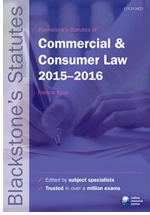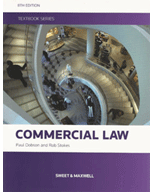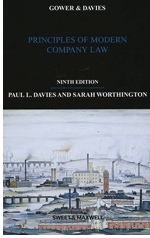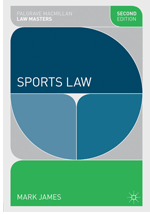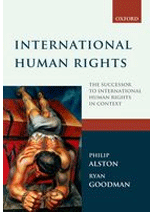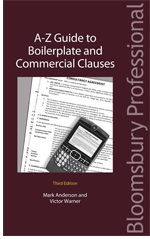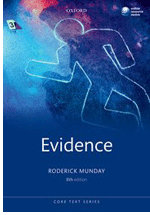
Publisher: Oxford University Press
Edition: 8th Edition (May 2015)
ISBN: 978-0-19-873349-2
Price: £32.99
Now a long-standing text on evidence, and from Oxford University Press’ excellent Core Text Series, Roderick Munday’s Evidence aims to offer students a succinct yet thought-provoking introduction to all of the key areas covered on law of evidence courses. It has been thoroughly updated since the last edition to consider a number of important cases including Mitchell v News Group Newspapers Limited [2014] EWHC 3590 (QB) and R v Dixon [2014] 1 WLR 525. These updates, along with many others, have led to seamless re-writing of this latest edition of Evidence.
Written by Dr Roderick Munday, Evidence is split into twelve chapters: relevance and admissibility of evidence; presumptions and the burden of proof; witnesses: competence, compellability and various privileges; the course of the trial; witnesses’ previous inconsistent statements and the remnants of the rule against narrative; character and credibility; evidence of the defendant’s bad character; the opinion rule and the presentation of expert evidence; the rule against hearsay; confessions; drawing adverse inferences from a defendant’s omissions, lies, or false alibis; identification evidence.
Munday’s Evidence is primarily written for criminal evidence courses; this necessarily dictates the topics it covers. For example, there is a fascinating point for civil practitioners on the reserved burden of proof in some statutory provisions like the Employment Rights Act 1996 and the Consumer Credit Act 1974. However, this is not dealt with in Evidence. What is covered, however, are the key topics covered on many undergraduate evidence courses. This includes an excellent analysis of topics like failing to give evidence at trial. Evidence is also written in a clear and accessible way; this is some achievement for this ever evolving and fast-moving area of law.
If you are looking for an introductory text on the law of evidence, Munday’s Evidence certainly provides this. It also comes with an Online Resource Centre (available from: http://global.oup.com/uk/orc/law/evidence/munday8e/) which, by the time of this review, has a number of useful weblinks and two updates (which is impressive). Its price, however, may be just too much for many students looking for an introductory text (and it is one of the most expensive texts from Oxford University Press’ Core Text Series). For those who do buy a copy of Munday’s Evidence, they will find it provides an accessible and clear account of the law of evidence.
Reviewed on 28 December 2015

